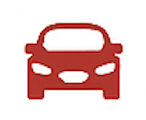Exploring the Distinctive Car Culture of Chile Across Regions and Generations
Urban Driving in Santiago: Navigating a Growing Metropolis
Santiago, Chile's capital, represents the epicenter of car culture in the country. With a population exceeding six million, the city experiences heavy traffic during rush hours, prompting a unique urban driving culture characterized by strategic lane-switching, defensive driving, and widespread use of motorcycles for faster commuting. The city's road infrastructure has been significantly modernized over the past two decades, but congestion remains a pressing issue, particularly along main arteries such as Avenida Vicuña Mackenna and the Costanera Norte expressway.
In response to congestion, Santiago has developed a sophisticated toll road network with electronic toll collection systems known locally as 'TAG'. These urban highways, including Autopista Central and Vespucio Sur, are heavily used by commuters and logistics operators alike. However, toll costs can be prohibitive for some drivers, contributing to socio-economic disparities in car access and usage. Many residents opt for public transport or ride-sharing services, especially given the high price of gasoline and vehicle maintenance in the city.
Used Imports and the Prevalence of Japanese Vehicles
Chile has long been known for its open import policies, making it one of South America's key markets for used cars, particularly from Japan. Japanese vehicles dominate the streets, especially brands like Toyota, Nissan, Mazda, and Subaru. These cars are favored for their reliability, fuel efficiency, and ease of repair. The port city of Iquique, located in the northern Tarapacá Region, serves as a major hub for the import and re-export of used vehicles, often sold throughout the country after being modified to meet local standards.
The popularity of right-hand-drive Japanese imports has prompted a cottage industry in vehicle modification. Cars must be converted to left-hand-drive before legal use on Chilean roads, leading to thriving businesses specializing in compliance retrofits. While regulations have tightened in recent years to curb informal sales and ensure safety standards, used imports remain a cost-effective choice for many Chileans, particularly in rural areas and among small business owners.
Car Ownership Trends and Social Status in Chilean Society
Car ownership in Chile is closely linked to social mobility and status. For many Chileans, purchasing a car—especially a new or higher-end model—serves as a symbol of upward economic progress. In middle-class neighborhoods, it is common to see residents investing heavily in vehicle upgrades, aesthetic modifications, and audio systems as a form of self-expression. The aspiration to own a vehicle is often tied to family needs, particularly in areas lacking robust public transport options.
Despite rising ownership rates, the high cost of financing, fuel, and insurance means that car ownership remains out of reach for a segment of the population. Leasing and installment-based financing have become increasingly popular, with banks and dealerships offering aggressive promotions to attract new buyers. Cars such as the Suzuki Swift, Chevrolet Sail, and Kia Morning are popular choices for first-time owners due to their affordability and low maintenance requirements.
The cultural significance of cars extends beyond function. In cities like Valparaíso and Temuco, weekend car meets and informal exhibitions are common among younger enthusiasts. Modified sedans, hatchbacks, and even pickup trucks are displayed proudly, reflecting both individual style and community pride. Online communities and social media have further expanded this scene, giving rise to regional groups that organize events and share modification tips.
Rural Driving Culture and the Role of Pickup Trucks
Outside of urban centers, Chilean driving culture is shaped by terrain and utility needs. In regions like Araucanía, Los Lagos, and Aysén, where agriculture and forestry dominate, pickup trucks are the preferred vehicle type. Models such as the Toyota Hilux, Mitsubishi L200, and Nissan NP300 are commonplace, valued for their durability, ground clearance, and load capacity. These vehicles are used not just for work, but also as family transport, especially in areas with limited road infrastructure.
Road conditions in rural Chile can vary dramatically. While major routes are paved and maintained, many secondary roads are gravel or dirt, particularly in the mountainous and southern regions. Drivers adapt by maintaining conservative speeds, relying on manual transmission skills, and carrying emergency kits. Four-wheel drive capability is highly sought after, especially in winter months when snowfall and heavy rains make travel more difficult.
Rural car culture is also marked by a strong sense of practicality. Fuel economy, ease of maintenance, and parts availability take precedence over brand prestige. That said, many rural drivers form strong loyalties to brands that prove reliable under demanding conditions. Diesel engines are particularly popular due to lower fuel costs and better torque performance for carrying loads or navigating hilly terrain.
Environmental Regulations and the Push Toward Electrification
As Chile moves toward more sustainable transportation, environmental concerns have begun reshaping car culture, especially in larger cities. The Ministry of Transport has introduced stricter emissions standards for new vehicles and has implemented vehicle restriction policies (restricción vehicular) based on license plate numbers to limit air pollution during high-smog days. These measures have encouraged consumers to consider hybrid and electric alternatives, although adoption remains modest due to cost and limited charging infrastructure.
Government incentives for electric vehicles (EVs), such as import tax reductions and exemptions from circulation permits, have begun to stimulate growth in the market. Brands like BYD, Hyundai, and Nissan are leading the charge with electric models available to urban consumers. Additionally, Santiago's public bus fleet now includes hundreds of electric units, serving as a model for cleaner transit solutions. However, outside of major urban centers, access to EV infrastructure is sparse, limiting broader adoption in rural and remote areas.
